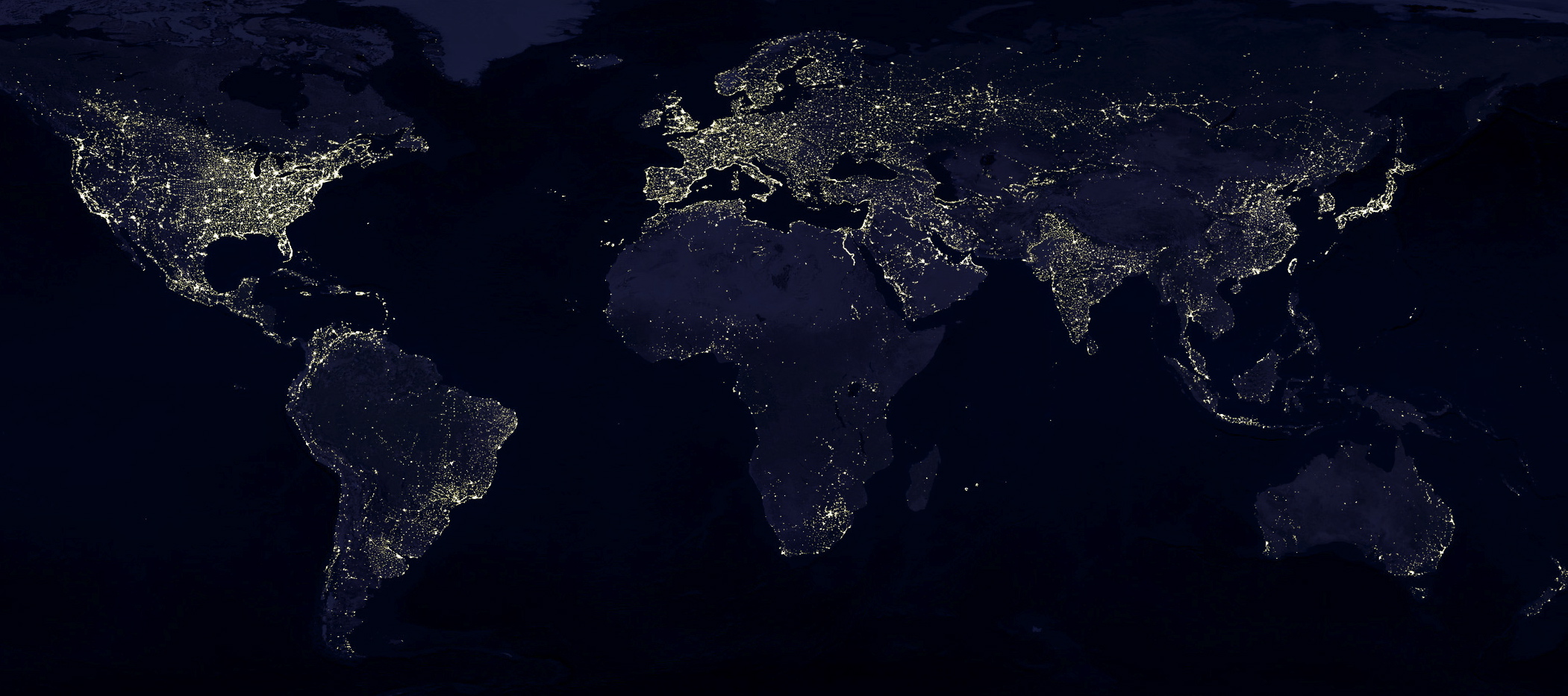 Neighbors of mine here on the eastern end of Long Island are making a film about local efforts to defend yet another threatened element of our ecosystem—the great vanishing wilderness of the night sky. This image of the Earth from space (once an Astronomy Picture of the Day) captures the global scope of the problem.
Neighbors of mine here on the eastern end of Long Island are making a film about local efforts to defend yet another threatened element of our ecosystem—the great vanishing wilderness of the night sky. This image of the Earth from space (once an Astronomy Picture of the Day) captures the global scope of the problem.
 Zooming in on the continental United States, Long Island appears as a bright tongue of flame extending from the nexus of nocturnal illumination that is Washington-Philadelphia-New York-Boston.
Zooming in on the continental United States, Long Island appears as a bright tongue of flame extending from the nexus of nocturnal illumination that is Washington-Philadelphia-New York-Boston.
As a card-carrying, lifetime member of the International Dark Sky Association, I am on record (and soon voice-over in the new film by the Accabonac Protection Committee) for complaining to anyone who will listen: The blight of urban sky glow stops children from wishing on stars, and lovers from counting them. Light pollution—meaning house lights and street lights that spill their illumination up to the sky, instead of directing it down on the ground where needed for safety—can sever our human connection to the beautiful celestial creatures of the night.
Whenever I talk to school groups, I ask the students , “How many of you have seen the Milky Way?” The number of hands varies from city to country setting, naturally, but the numbers get smaller all the time as we relinquish our live view of the universe.
Professional astronomers flee light pollution by decamping to observatories in remote mountain settings, as well as by sending telescopes into space. But people in other walks of life, not to mention other forms of life that share the planet, suffer from the disappearance of darkness at night.
Having grown up in New York City, I can hardly advocate dimming the lights on the late-night metropolitan habitat. Where I live now, however—and perhaps where you live?—it is still possible to reduce energy costs, protect animal habitats, and possibly even reap health benefits by adjusting outdoor lighting according to measures recommended by regional and state dark sky societies.
